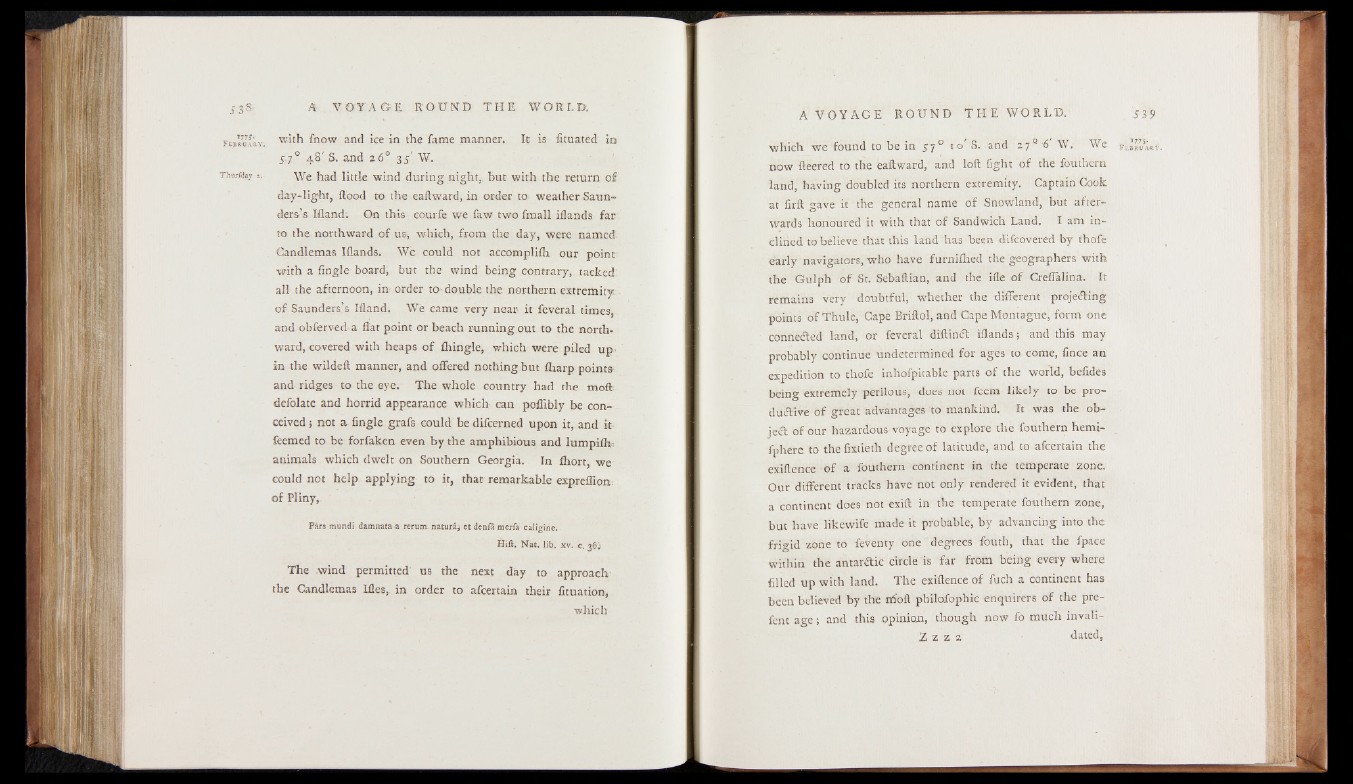
177Î-
F e b r u a r y
Thurfday a.
with fnow and iee in the fame manner. It is fituated ini
jjgm 48' S. and 2 6° 3s ' W.
We had little wind during night, but with the return of
day-light, flood to the eaftward, in order to weather Saunders’s
Ifland. On this eourfe we faw two fmall iflands far
to the northward of us, which, from the day, were named
Candlemas Iflands. We could not accomplilh our point
with a Angle board; but the wind being contrary, tacked
all the afternoon, in order to-double the northern extremity,
of Saunders’s Ifland. We came very near it feveral times,
and obferved a flat point or beach running out to the northward,
covered with heaps of fliingle, which were piled up-
in the wildeft manner, and offered nothing but fharp points-
and ridges to the eye. The whole country had the molt,
defolate and horrid appearance which can poffibly be conceived
; not a Angle grafs could be difcerned upon it, and it
feemed to be forfaken even by the amphibious and lumpifh-.
animals which dwelt on Southern Georgia. In fhort, we
could not help applying to it, that remarkable expreftion.
of Pliny,
Pars mundi damnata a reruns natura, ct dcnfa merfa caligirie.
Hift. N a t. lib. x v . c. 36;
The .wind permitted us the next day to approach
the Candlemas Ifles, in order to afcertain their Atuation,
which
J 3 9
which we found to be in 10 S* and 2.7° A W. We .February.
now fleered to the eaftward, and loft fight of the fouthern
land, having doubled its northern extremity. Captain Cook
at firft gave it the general name of Snowland, but afterwards
honoured it with that of Sandwich Land. I am inclined
to believe that this land has been difcovered by thofe
early navigators, who have furnifhed the geographers with
the Gulph of St. Sebaftian, and the ifle of Creflalina. It
remains very doubtful, whether the different projecting
points of Thule, Gape Briftol, and Cape Montague, form one
connected land, or feveral diftinft iflands ; and this may
probably continue undetermined for ages to come, fince an
expedition to thofe inliofpitable parts of the world, befides
being extremely perilous, does not feem likely to be productive
of great advantages to mankind. It was the object
of our hazardous voyage to explore the fouthern hemi-
fphere to the fixtieth degree of latitude, and to afcertain the
exiftence of a fouthern continent in the temperate zone.
Our different tracks have not only rendered it evident, that
a continent does not exift in the temperate fouthern zone,
but have likewife made it probable, by advancing into the
frigid zone to feventy one degrees fouth, that the fpace
within the antardfic circle is far from being every where
filled up with land. The exiftence of fuch a continent has
been believed by the irioft philofophic enquirers of the pre-
fent age; and this opinion, though now fb much invali-
Z z z 2 dated,